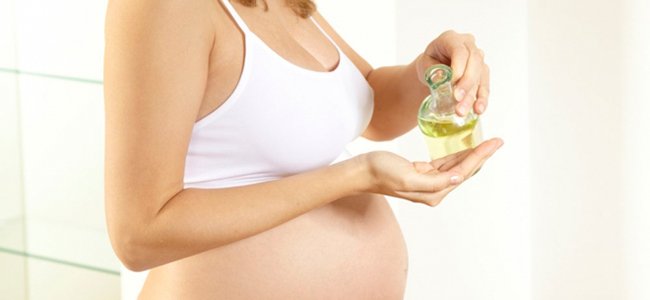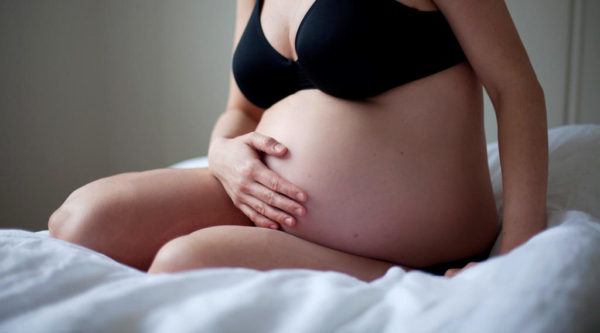How to Do a Perineal Massage

The perineal massage is one of the most effective techniques you can use to relax the muscles and tissues involved in childbirth. It can also be an excellent preparatory practice for the moment the baby actually comes out.
However, the practice has specifications and contraindications that are important to consider. Here, we’ll explain some of the things to take into account when performing a perineal massage.
The greatest fear of every pregnant woman is that her delivery will be extremely painful or have complications. Preparing your muscles and tissues is a critical part of having a healthy and smooth delivery.
What is the perineum?
Firstly, the perineum is simply the base of the pelvis. It’s made up of a series of soft tissues between where the anus and the male and female reproductive organs are located.
This part of the human anatomy also has a set of small muscles that are affected the moment the doctors remove the head and lower side of a newborn.
The characteristics of women’s reproductive organs allow for passage to this area for prenatal preparation.
Getting ready before starting
For lubrication, it’s recommended that you use natural oils such as rose hip or almond-based products. In addition, you can use a mirror to see the area you’re massaging in order to have more control over your movements.
The way you position yourself is also important when performing the massage. In general, women find it best to squat, because that way they can see more easily what they’re doing with their hands. In any case, comfort is key.
It should be noted that your hands must be clean before starting in order to avoid infections to the urinary tract and vagina.
Performing the perineal massage

With the help of a natural lubricating oil, insert your thumb inside the reproductive organ. The muscles you need to massage are only 3 or 4 cm from the opening.
To take care of your pregnancy is to take care of your baby.
-Anonymous-
The most important thing is to put pressure on the perineum. This should be done for at least a minute, pushing down in the direction of the vagina and the anus.
In the beginning, it should only be done up to the point where it hurts or generates any symptoms of wearing down or inflammation.
It’s also important to do a back and forth movement with your thumb that lasts between 3 and 4 minutes approximately. Don’t forget the external massage in the area of skin located between the anus and the female genital area.
Some tips and tricks
At the beginning, this routine might seem a bit annoying, but it will be nothing compared to the actual delivery. It’s important to visualize that the baby’s head will pass through this area in the moment of dilation.
You can also picture the cardinal points inside the vaginal canal: north, south, east and west. Basically, the massages will move downwards and then in the shape of a “u,” right and left.
With regards to the upper quadrant, you must be very careful when handling it. It’s essential to avoid pressing the urethra, which can lead to vaginal infections. Remember that the massage should be done with your thumb.
Specifications for carrying out the routine
Doctors recommend carrying out this practice regularly from the 32nd week of pregnancy onward.
The massage can be done by the pregnant woman herself, although it’s also recommended that the partner participate and be the one to do the massage, following the instructions of the pregnant woman. This way, the partner feels included and helpful.
Remember that the pressure should not hurt. However, the movements must be firm because the purpose of the massage is for the muscles to relax. For this, a certain level of pressure must be reached.
Some contraindications
Your hands should never be dirty while performing the massage in order to avoid infections inside the vagina. Additionally, the use of perfumed creams or oils is also not recommended.
If the pregnant woman has vaginal lesions or recurrent infections, it’s best to stop this practice. The objective of the perineal massage is to ease and prevent complications in the days preceding the delivery.
Women with complications during pregnancy or with the potential for miscarriage, displacement, or ruptured membranes should also abstain. For this reason, it’s recommended that you start the massage only after the sixth month of pregnancy.
Along the same lines, the best thing to do would be to consult your doctor before performing the perineal massage.
All cited sources were thoroughly reviewed by our team to ensure their quality, reliability, currency, and validity. The bibliography of this article was considered reliable and of academic or scientific accuracy.
- Creus M, Martínez C, Olivera G, Vela E. El masaje perineal. FAME. Federación de Asociaciones de Matronas de España. 2018. [En línea].
- Soliva, I. Masaje perineal antenatal como medida de prevención del trauma perineal durante el parto vaginal: revisión sistemática. Trabajo de Fin de Grado. 2016. Universidat de Lleida, grau en Fisioterapia. [En línea].
This text is provided for informational purposes only and does not replace consultation with a professional. If in doubt, consult your specialist.







